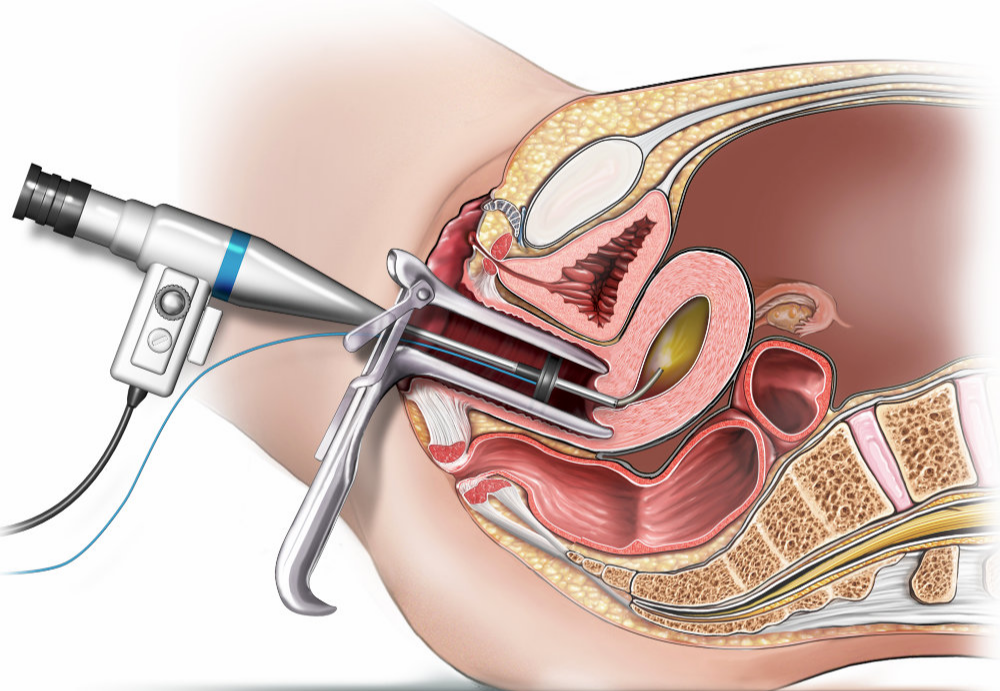What happens during a hysteroscopy?
On the day of the procedure, you’ll be asked to empty your bladder and change into a hospital gown. You may receive anesthesia or a sedative to help you relax. The type of anesthesia you receive depends on whether the hysteroscopy will take place in a hospital or your surgeon’s office and whether other procedures will occur simultaneously.
You’ll be positioned on the exam table with your legs in stirrups. Once you’re in position, your surgeon will:
- Perform a pelvic exam.
- Dilate (open) your cervix so the hysteroscope can be inserted.
- Insert the hysteroscope through your vagina and cervix into your uterus.
- Send a liquid solution through the hysteroscope and into your uterus, gently expanding it and clearing any blood or mucus. This step allows your surgeon to view your uterus, uterine lining and fallopian tubes.
- Inspect your uterine cavity and the openings of your fallopian tubes. The light from the hysteroscope makes it easier for your surgeon to get a clear view.
- Insert surgical instruments through the hysteroscope that can be used to remove any irregular abnormalities (if surgery is needed).
- A hysteroscopy can last anywhere from five minutes to more than an hour. The length of the procedure depends on whether it’s diagnostic or operative and whether an additional procedure, such as laparoscopy, is done simultaneously. Diagnostic hysteroscopy usually takes less time than operative.

